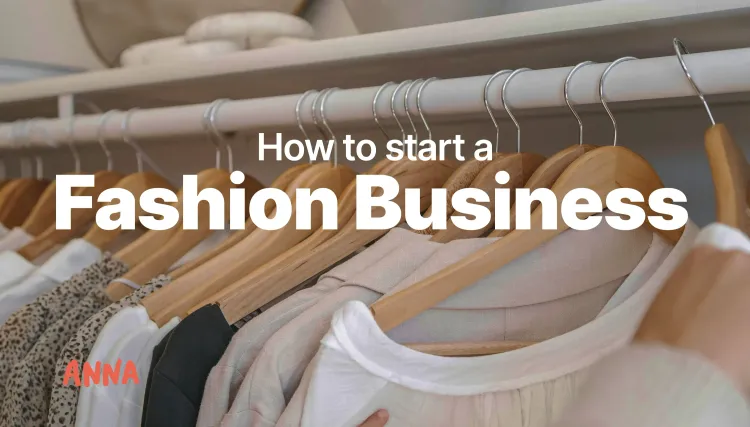Discover how to start an interior design business with practical steps to set up, build credibility, attract clients, and grow confidently.

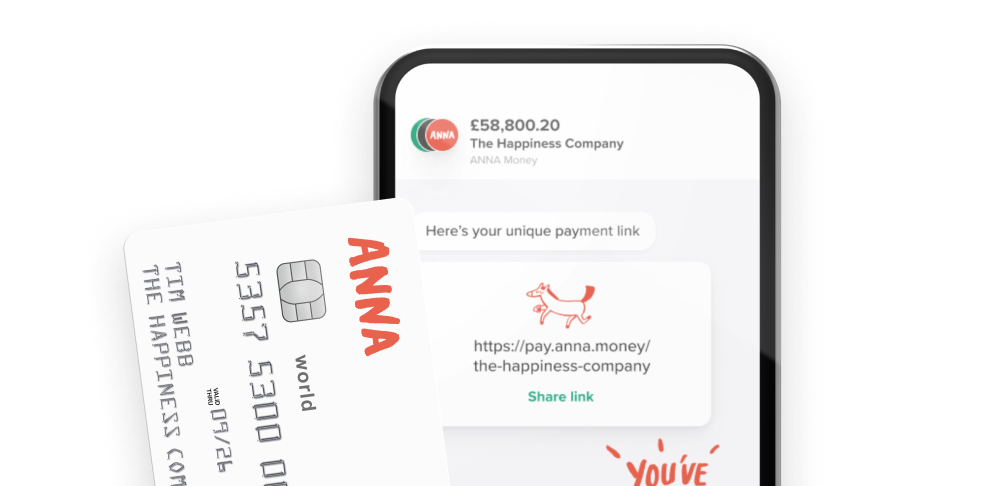
You’ve got a knack for transforming spaces, but between legal setup, client outreach, pricing, and marketing, the ‘blank canvas’ of starting your own interior design business can look rather intimidating.
You wouldn’t start a project without a mood board or a layout plan, so why build your business without one, right?
If you’re wondering how to start an interior design business, you’re in the right place.
We’ll show you all the steps you need to take, from registering your business to attracting your first clients, so that you can turn your creative vision into a thriving business.
What can the UK interior design market size tell you?
The UK’s interior design industry is thriving. In 2025, the market was estimated to be worth around £1.9 billion, driven by steady demand from both new builds and home renovations.
When you look at the bigger picture, the sector generated roughly $5.1 billion in 2024 and is projected to reach $6.1 billion by 2030, at a healthy growth rate of about 3.2% a year.
Residential design continues to lead the way, but there’s also growing momentum in the hospitality and commercial office sectors.
Businesses are investing more in spaces that create memorable experiences, not just for clients, but also for employees.
| Sector | Estimated revenue (£ million) | Approximate share (%) |
| Residential | £1,045 million | 55% |
| Commercial | £570 million | 30% |
| Public | £285 million | 15% |
How to start an interior design business in 6 efficient steps?
Let’s take a look at the key steps you should follow so you can properly take your interior design business off the ground.
1. Choose a business structure and register
When you’re setting up your interior design business in the UK, one of the first big decisions is how to structure it. Most designers go with one of two options: sole trader or limited company.
1.1. A sole trader
If you start out as a sole trader, you and your business are legally the same entity.
It’s the simplest setup: quick to register with HMRC, minimal paperwork, and you’ll just need to complete a Self-Assessment tax return each year ( more about it soon).
You’ll keep all your profits, but you’ll also carry unlimited liability, meaning if things go wrong financially, your personal assets (like your home or savings) could be at risk. You’ll pay income tax on your profits along with Class 2 and Class 4 National Insurance.
For many designers starting small or testing the waters, this route keeps things straightforward and low-cost.
Keep in mind that as your profits grow, this may not be the most tax-efficient option in the long term.
1.2. Limited company
Setting up as a limited company means your business becomes a separate legal entity. Your personal assets are protected if the company runs into debt.
You’ll need to register with Companies House and stay on top of ongoing admin, such as filing annual accounts, a corporation tax return, and a confirmation statement.
Your company also pays corporation tax on its profits, and you can pay yourself a mix of salary and dividends, which can work out more tax-efficiently.
This setup can also give you a bit more credibility with clients or investors and make it easier to bring in partners or funding later on.
On the downside, it means more paperwork, higher accounting costs, and stricter compliance.
But if you’re planning to grow, hire staff, or reinvest profits, it’s often the smarter long-term move.
2. Boost credibility with licenses
The good news is that in the UK, you don’t need a special government license to run an interior design business.
There’s no mandatory certification or official permit standing between you and your first client.
However, if you want to build credibility and stand out, it’s worth joining a recognised professional body such as the British Institute of Interior Design (BIID).
Membership signals to clients that you’re serious about standards, ethics, and professional development, which can go a long way in earning trust, especially when you’re just starting out.
Other certificates worth considering:
- Chartered Society of Designers (CSD): Joining the CSD gives you official recognition as a professional designer. It’s a great way to demonstrate your design skills and commitment to ethical standards across the industry.
- National Council for Interior Design Qualification (NCIDQ): Although it’s based in North America, the NCIDQ certification is internationally recognised and respected. It highlights your advanced understanding of design, safety, and professional practice. It’s ideal if you plan to work with global clients or expand abroad.
- Society of British & International Interior Design (SBID): Another respected UK-based accreditation, the SBID promotes high professional standards through a thorough assessment of your knowledge, skills, and project experience. Membership can boost your credibility and help you connect with other design professionals.
| Certification / Membership | Valued for residential work | Valued for commercial work | Key benefits |
| British Institute of Interior Design (BIID) | Yes | Yes | Demonstrates professionalism, ethical standards, and provides networking and development opportunities. Recognised across sectors. |
| British Academy of Interior Design (BAID) | Yes | Less common | Focus on creative residential design skills. |
| National Council for Interior Design Qualification (NCIDQ) | Yes, especially for safety and functional design | Yes, highly regarded for regulatory knowledge and project scale | Internationally recognised, confirms advanced proficiency. |
| Society of British & International Interior Design (SBID) | Yes | Yes | Quality assurance and sustainability focus. |
| Chartered Society of Designers (CSD) | Yes, valued in high-end residential | Yes, chartered status valued for complex projects | Widely respected professional design accreditation. |
3. Get business insurance
The right insurance acts like a safety net, covering you if something goes wrong with a project, a client dispute, or even an accident in the workplace.
The main types of insurance coverage help you manage everything from professional advice and client relationships to employee safety and legal protection, while keeping your business compliant with UK regulations.
3.1. Professional Indemnity Insurance
If a client claims they’ve lost money because of an error in your design advice, for example, a wrong measurement or a specification oversight, this insurance covers legal costs and compensation.
It’s a must-have for anyone offering design services or advice. Most designers start with a cover between £100,000 and £1 million, depending on project size and risk level.
3.2. Public Liability Insurance
It protects you if someone gets hurt or something gets damaged because of your work.
For example, if you accidentally scratch a client’s antique table during a site visit or a visitor trips in your studio, public liability insurance has you covered.
It typically starts around £1 million, with higher options available for bigger or higher-risk projects.
This insurance is essential if you meet clients face-to-face or visit sites regularly.
3.3. Employers’ Liability Insurance
If you employ anyone, even part-time staff, contractors, or freelancers, this insurance isn’t optional but a legal requirement in the UK.
It covers you if an employee is injured or becomes ill due to their work, protecting your business from costly compensation claims.
3.4. Legal expenses Insurance
Disputes can happen over contracts, clients, or employment issues.
Legal expenses insurance helps cover the cost of lawyers, court fees, and settlements if things ever reach that point.
It’s a smart safety move for protecting both your business finances and your reputation.
Which cover do you need?
If you’re just starting out as a solo interior designer, the must-haves are usually Professional Indemnity and Public Liability Insurance.
They’ll protect you against the most common risks when working with clients and offering design advice.
As your business grows, you may hire staff, invest in additional equipment, or take on larger commercial projects.
In that case, it’s worth adding Employers’ Liability and Legal Expenses Insurance to your toolkit.
The key is to build your cover like you’d design a space: start with the foundations, then add layers as your business expands.
4. Get the right tools
When you’re putting together the tools and equipment for your interior design business, think beyond just the creative side.
You’ll want a well-rounded toolkit that helps you handle both the design and practical aspects of your job.
| Tool category | Recommended brands / Options | Purpose |
| Sketching & drafting | Staedtler, Faber-Castell, Rotring | High-quality pencils, sketchbooks, and rulers for precise drawings |
| CAD Software | AutoCAD, SketchUp, ArchiCAD | Creating 2D plans, 3D models, and BIM designs |
| 3D rendering software | Lumion, Enscape, D5 Render | Photorealistic visualisations to showcase design concepts |
| Computer hardware | Apple MacBook Pro, Dell XPS, Microsoft Surface | High-performance laptops for graphic and 3D work |
| Colour tools | Pantone, Benjamin Moore, Farrow & Ball colour guides | Colour wheels and palettes for accurate colour selection |
| Fabric & material samples | Design Library, Material Bank, local fabric suppliers | Samples for client decision-making |
| Measuring tools | Leica Disto laser measure, Stanley tape measures | Accurate space measurements |
| Photography | Canon EOS series, Sony Alpha series, Apple iPhone Pro | Documenting project progress and portfolio |
| Transport & storage | Pelican Cases, Thule Bags, Ford Transit vans | Safely transporting samples and materials |
5. What does it cost to start your interior design business?
Startup costs when starting an interior design business in the UK depend largely on the scale and scope of your setup.
The prices start at around £5,000, but can reach tens of thousands.
| Cost category | Estimated cost range |
| Business registration | £50-£71 |
| Legal fees | £500–£2,000+ |
| Equipment & software | £1,700–£5,500 |
| Insurance | £300–£1,200 |
| Branding & marketing | £700–£3,000 |
| Office/workspace | £0–£2,000+ per month |
| Project management | £0–£200 per month |
| Professional membership | £100–£500 annually |
6. Take care of taxes and contributions
Setting up your interior design business in the UK means getting a few formalities in place.
1. Registering with HMRC
- Sole traders need to sign up for Self Assessment to declare and pay income tax on profits.
- Limited companies have a couple of extra steps: you register your company with Companies House and also register for Corporation Tax with HMRC within three months of starting to trade.
Once you register, HMRC will give you a UTR number. It’s like your official tax ID: you’ll use it for income tax (sole traders) or corporation tax (limited companies).
2. National Insurance Contributions (NICs)
Sole traders pay Class 2 and Class 4 NICs, depending on their profits.
Limited companies pay employer NICs on salaries for directors and employees.
3. VAT Registration
- You must register for VAT if your business's taxable turnover exceeds the VAT threshold, currently £85,000 annually.
- Voluntary VAT registration is also an option if it benefits your business, allowing you to reclaim VAT on purchases.
Other registrations you might need:
- PAYE (Pay As You Earn): If you hire staff, you need to register as an employer so you can handle payroll taxes.
- Data Protection (ICO/GDPR): If you store client or employee data, you may need to register with the Information Commissioner’s Office and follow GDPR rules.
Getting these registrations sorted early keeps your business compliant and gives you peace of mind so you can focus on the creative side without worrying about penalties down the line.
📢 Don’t miss out
Did you know that from 2026, sole traders in the UK will start to file their taxes digitally four times a year?
Here’s a catch: Most providers will try to sell you expensive accounting software that you’ll have to set up, learn, and manage on your own.
Here at ANNA, we make it effortless and free. Yup, that’s right.
For your first year, we offer a 100% discount on our MTD service. That means:
- No new software to learn: ANNA does everything for you.
- No calculations or forms: Just answer a few simple questions.
- No manual work: ANNA automatically collects data from your bank accounts, prepares your returns, and files them for you.
- No hidden costs: The entire service is free for 12 months.

Ah, yes, if you want to run a limited company, you can open a business account and register your company with the Companies House fee on us, all in one go.
We’ll also take care of your VAT, PAYE and Corporation Tax. 😎
How to attract your first clients?
Landing your first interior design clients in the UK is all about showing the world what you can do, even if your portfolio is small.
Start by sharing your work, whether it’s small projects, mood boards, or before-and-after photos from spaces you’ve helped friends or family transform.
Social media is your best friend: Instagram, Pinterest, and LinkedIn are perfect for turning scrolls into inquiries.
Get out there in real life, too. Network at local events, join design communities, or team up with architects, builders, or furniture shops.
And never underestimate word-of-mouth: happy clients are your best marketing tool, so ask for referrals and testimonials. The key is visibility and connection.
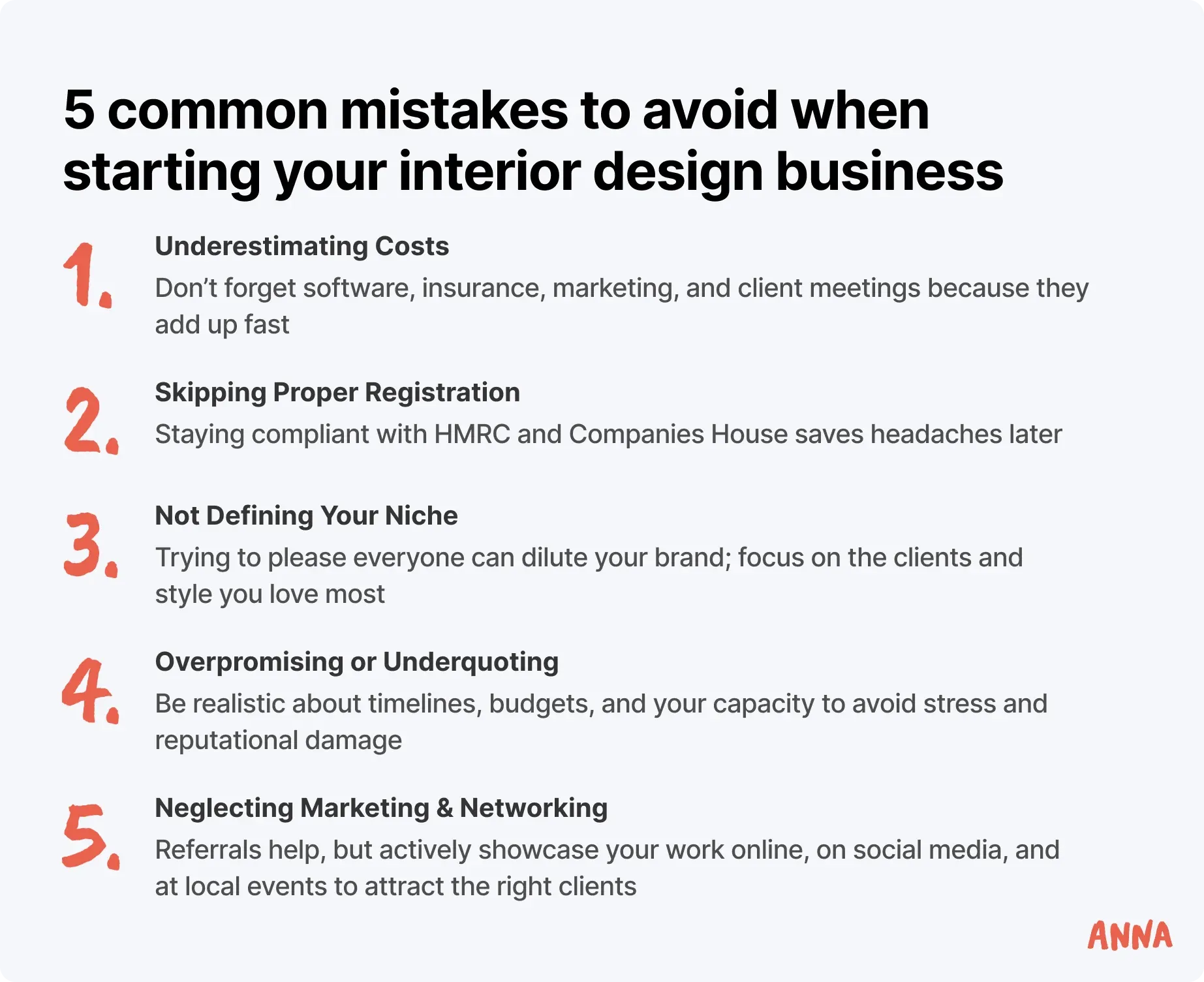
❌ One of the biggest mistakes is underestimating costs, from software subscriptions and professional insurance to marketing and client meetings, expenses add up quickly.
❌ Another pitfall is skipping proper business registration or ignoring tax obligations. Staying compliant with HMRC and Companies House will save headaches later.
❌ Many new designers also neglect to define their niche. Trying to appeal to everyone can dilute your brand, whereas focusing on a specific style or client type makes it easier to stand out.
❌ Overpromising or underquoting on projects is another trap. It can hurt your reputation and your finances.
❌ Last but not least, some forget the power of networking and marketing, relying solely on referrals instead of actively showcasing their work online and offline.
Avoid these missteps, and you’ll be off to a smoother start.
How to start an interior design business easily with ANNA?
ANNA is an all-in-one business account for money, invoicing, accounting, expenses, bookkeeping and taxes.
What ANNA does for you:
✨ Enables you to open a business account and register your business within one day (we’ll take care of the Companies House fee).
✨ Helps you check the name availability with our Free Name Checker, and if your name is taken, we’ll provide similar options based on your initial suggestion.
✨ Keeps all your documents safe, sorted, and accessible.
✨ Maintains your books in perfect order 24/7.
✨ Calculates the most tax-efficient amount you owe.
✨ Prepares and files Corporation Tax directly with HMRC.
✨ Calculates and submits your VAT returns.
✨ Prepares and files your Self Assessment income tax.
✨ Manages PAYE for your team.
✨ Creates and tracks invoices automatically.
✨ Delivers and files Year-End Financial Statements.
✨ Submits Confirmation Statements to Companies House.
Try ANNA today to see how you can start your interior design business quickly, smoothly and without a glitch.
Read the latest updates
You may also like
Open a business account in minutes
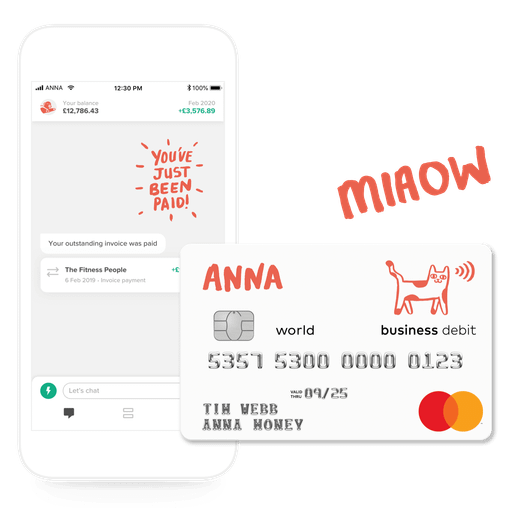




![140 Creative Tutoring Business Names [Ideas & Examples]](https://storage.googleapis.com/anna-website-cms-prod/medium_Cover_3000_Landscaping_Business_Names_Creative_Name_Ideas_d7964059b3/medium_Cover_3000_Landscaping_Business_Names_Creative_Name_Ideas_d7964059b3.webp)

![How to Start a Self-Employed Business in the UK [Guide]](https://storage.googleapis.com/anna-website-cms-prod/medium_Cover_3000_Landscaping_Business_Names_Creative_Name_Ideas_fe5b6edef1/medium_Cover_3000_Landscaping_Business_Names_Creative_Name_Ideas_fe5b6edef1.webp)
![How to Start an Electrician Business in the UK [Guide]](https://storage.googleapis.com/anna-website-cms-prod/medium_Cover_3000_How_to_Start_a_Car_Detailing_Business_Successfully_74488a6268/medium_Cover_3000_How_to_Start_a_Car_Detailing_Business_Successfully_74488a6268.webp)




![How to Start a Graphic Design Business in 2026 [Full Guide]](https://storage.googleapis.com/anna-website-cms-prod/medium_Cover_3000_How_to_Start_a_Graphic_Design_Business_in_2025_d8d412cdf5/medium_Cover_3000_How_to_Start_a_Graphic_Design_Business_in_2025_d8d412cdf5.webp)


![How to Start an Event Planning Business [Full UK Guide]](https://storage.googleapis.com/anna-website-cms-prod/medium_Cover_3000_How_to_Start_an_Event_Planning_Business_in_the_UK_9e78d91fa0/medium_Cover_3000_How_to_Start_an_Event_Planning_Business_in_the_UK_9e78d91fa0.webp)
![How to Start a Hoodie Business in 2025 [Full Guide]](https://storage.googleapis.com/anna-website-cms-prod/medium_Cover_3000_How_to_Start_a_Hoodie_Business_in_2025_Guide_17060b578d/medium_Cover_3000_How_to_Start_a_Hoodie_Business_in_2025_Guide_17060b578d.webp)
![How to Start a Bakery Business in the UK [2025 Guide]](https://storage.googleapis.com/anna-website-cms-prod/medium_Cover_3000_How_to_Start_a_Copywriting_Business_from_Scratch_e47ea6b2a6/medium_Cover_3000_How_to_Start_a_Copywriting_Business_from_Scratch_e47ea6b2a6.webp)

![How to Start a Copywriting Business from Scratch? [Guide]](https://storage.googleapis.com/anna-website-cms-prod/medium_Cover_3000_How_to_Start_a_Copywriting_Business_from_Scratch_cf3c4d7190/medium_Cover_3000_How_to_Start_a_Copywriting_Business_from_Scratch_cf3c4d7190.webp)
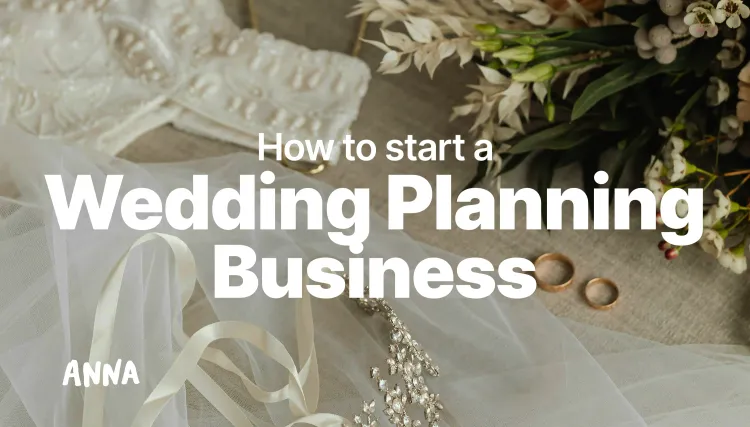

![How to Start a Retail Business [Beginner’s Guide to Success]](https://storage.googleapis.com/anna-website-cms-prod/medium_Cover_3000_How_to_Start_a_Retail_Business_O_Co_Beginner_OC_Oes_Guide_to_Success_f07f1f4e7c/medium_Cover_3000_How_to_Start_a_Retail_Business_O_Co_Beginner_OC_Oes_Guide_to_Success_f07f1f4e7c.webp)
![How to Start a Gutter Cleaning Business [Beginner’s Guide]](https://storage.googleapis.com/anna-website-cms-prod/medium_Cover_3000_How_to_Start_a_Gutter_Cleaning_Business_O_Co_Beginner_OC_Oes_Guide_f024e1b78f/medium_Cover_3000_How_to_Start_a_Gutter_Cleaning_Business_O_Co_Beginner_OC_Oes_Guide_f024e1b78f.webp)
![How to Start a Video Editing Business in 2025 [Full Guide]](https://storage.googleapis.com/anna-website-cms-prod/medium_Cover_3000_How_to_Start_a_Video_Editing_Business_in_2025_bf1c6865ee/medium_Cover_3000_How_to_Start_a_Video_Editing_Business_in_2025_bf1c6865ee.webp)
